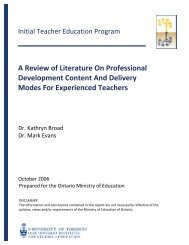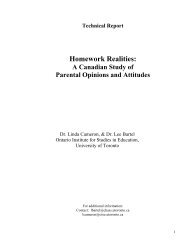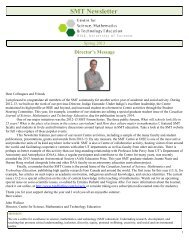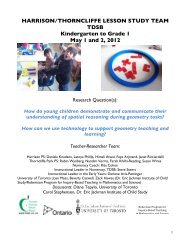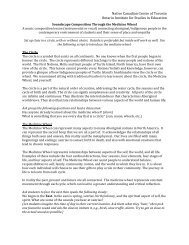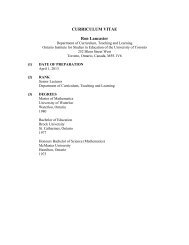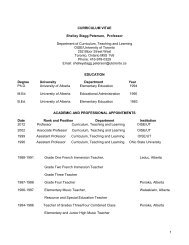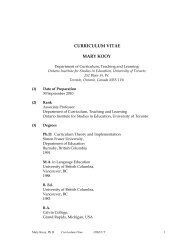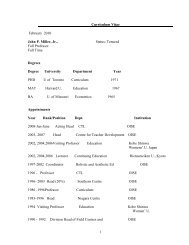The Ontario Curriculum, Grades 9-12 - Ministère de l'éducation ...
The Ontario Curriculum, Grades 9-12 - Ministère de l'éducation ...
The Ontario Curriculum, Grades 9-12 - Ministère de l'éducation ...
You also want an ePaper? Increase the reach of your titles
YUMPU automatically turns print PDFs into web optimized ePapers that Google loves.
improved production methods, automotive parts recycling), including ways of disposing<br />
of waste products (e.g., used oil, used batteries, used paints/thinners)<br />
C1.2 <strong>de</strong>scribe appropriate actions to be taken in the event of a spill of waste products (e.g.,<br />
gasoline, antifreeze) and <strong>de</strong>monstrate the ability to safely implement such actions (e.g.,<br />
implement an emergency action plan to contain and clean up the spill)<br />
C1.3 i<strong>de</strong>ntify the procedures required to prevent the release of ozone-<strong>de</strong>pleting materials and<br />
other harmful substances (e.g., electrolyte, antifreeze, gasoline) during the servicing of<br />
vehicle or craft systems<br />
C2. Technology and Society<br />
C2.4 assess the pros and cons of various types of fuel/energy sources (e.g., gasoline, propane,<br />
diesel, electrical/battery power, biodiesel, hybrid powerplant, hydrogen power cells)<br />
used to power vehicles or small-engine products, taking into account a variety of<br />
perspectives (e.g., consumer’s perspective: cost to purchase, cost to operate,<br />
performance, emission levels; service/repair perspective: training, safety issues, new<br />
tools/equipment required)<br />
Transportation Technology: Vehicle Maintenance, Gra<strong>de</strong> <strong>12</strong>,<br />
Workplace Preparation (TTJ4E)<br />
C. Technology, the Environment, and Society<br />
C1. Technology and the Environment<br />
C1. <strong>de</strong>monstrate an un<strong>de</strong>rstanding of ways in which various aspects of the transportation<br />
industry affect the environment, and ways in which harmful effects can be remedied<br />
or reduced<br />
C1.1 <strong>de</strong>monstrate an un<strong>de</strong>rstanding of ways in which the transportation industry affects the<br />
environment and of efforts being ma<strong>de</strong> to remedy or reduce harmful effects (e.g.,<br />
improved production methods, automotive parts recycling), including ways of disposing<br />
of waste products (e.g., used oil, used batteries, used paints/thinners)<br />
C1.2 explain the pros and cons of using environmentally friendly products (e.g., bio<strong>de</strong>gradable<br />
cleaners) and procedures (e.g., recycling of antifreeze) in the repair and service of<br />
vehicles or small-engine products<br />
C1.3 <strong>de</strong>scribe appropriate actions to be taken in the event of a spill of waste products (e.g.,<br />
used oil, antifreeze, fuel), and <strong>de</strong>monstrate the ability to safely implement such actions<br />
(e.g., outline the steps <strong>de</strong>scribed in an emergency action plan and carry them out)<br />
C2. Technology and Society<br />
C2.2 assess the pros and cons of various types of fuel/energy sources (e.g., gasoline, propane,<br />
diesel, electrical/battery power, biodiesel, hybrid powerplant, hydrogen power cells)<br />
used to power vehicles or small-engine products, taking into account a variety of<br />
perspectives (e.g., consumer’s perspective: cost to purchase, cost to operate,<br />
performance, emission levels; service/repair perspective: training, safety issues, new<br />
tools/equipment required)<br />
Technological Education 215



